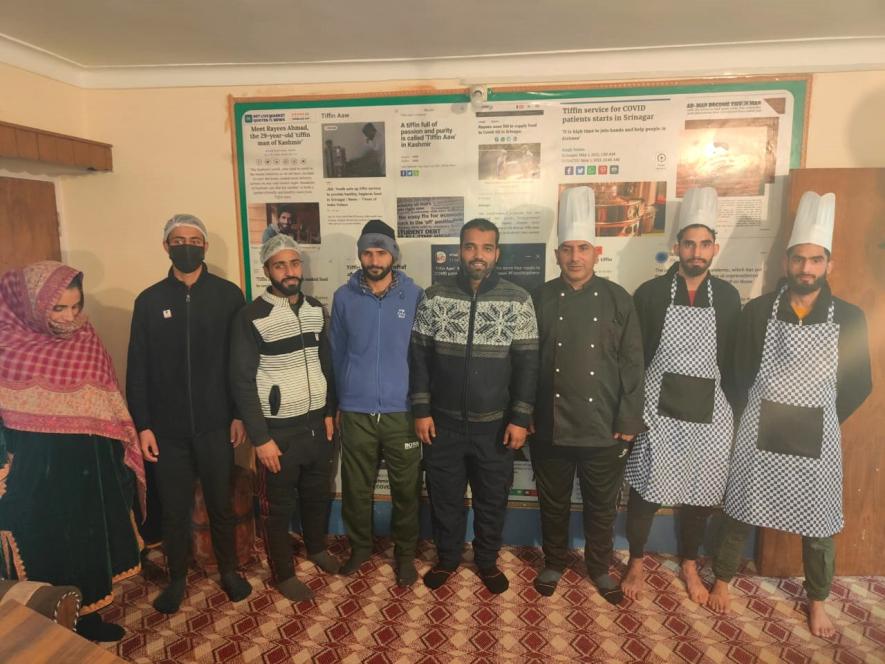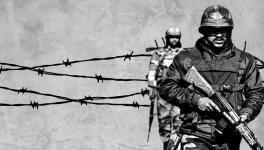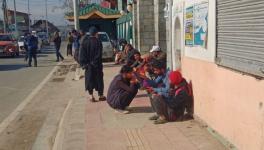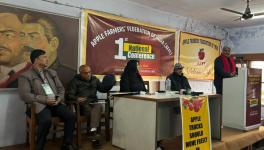Fragile Lull in Kashmir as Militant Cadres Shrink to Lowest in Years

Srinagar: On September 5, a bullet-riddled body of a 30-year-old youth was found in the apple orchards of Narpora area of Shopian in South Kashmir. A rival militant group carried out his killing, the police said.
The victim was identified as Manzoor Ahmad Nengroo, a resident of Rajpora village of Pulwama. Manzoor, like his four brothers, was believed to have been allegedly involved in the militancy, following which the Additional Director General (ADG) of Kashmir Police, Vijay Kumar, said that the killing was a case of “group rivalry” among the militants’ outfits.
One of Manzoor Nengroo’s brothers, Abbas Nengroo, was killed in an encounter in 2014. His other brother Reyaz Nengroo has been lodged in jail since 2018, and his third brother Ashiq Ahmad Nengroo is one of the most wanted men. Reyaz Nengroo was arrested in September 2018 on Jammu outskirts on charges of ferrying militants to Kashmir valley in a truck. While Reyaz Nengroo was intercepted, his brother Ashiq Nengroo was driving an i-10 vehicle following the same truck, but he managed to escape.
A Jaish operative later ferried Ashiq Nengroo from Shopian for his final escape, and he managed to take his family as well, which the officials later came to know while questioning the driver. According to security officials, the former trucker is now based in Pakistan and is believed to have played a key role in handling operations of the Jaish-e-Mohammad (JeM) outfit. Some even credit him for reviving the outfit after the group had lost all ground in the early years of the last decade.
Even as the situation across the union territory, including South Kashmir – a bastion of last militant revival since 2015, seems fragile owing to the civilian killings and militant recruitments, the militant outfits are faltering significantly. According to senior security officials, the number of locals currently active in the valley has fallen to almost a decadal low.
“The number of locals active right now is not more than 70 based on the inputs we have, and there are mostly two groups active right now -- JeM and Lashkar-e-Toiba (LeT),” a senior security official told NewsClick.
Another official said that most of the group data is “grey” and only a little over 60 locals are listed as militants, which is similar to the year 2013. “A recruit joins the cadre of any group that provides a weapon,” the Army officer said on the condition of anonymity.
In 2013, the militant cadres had shrunk to less than 70, with only six recruitments reported. The numbers later rose to reported recruitments of 88 in 2016, 139 in 2017, and 191 in 2018, the highest in recent years. Last year, around 142 recruitments were reported, while this year, the numbers have been around only 80 (until August), of which around 50 have been killed. There is, however, lesser clarity about the exact number of non-local militants who crossover from Pakistan into Kashmir. Officials believe their numbers may vary anywhere between 30 to 40, based on intel inputs and sightings.
The incidents of militant attacks have also decreased significantly this year so far compared to 229 militant attacks in 2021. In 2018, as many as 417 such attacks were reported, the highest in recent years.
Hizbul Mujahideen, the region’s oldest and most influential militant outfit since the early 1990s, currently has fewer recruits after being the face of the resurgence in the last decade. Operations All-Out I and All-Out II since 2017 and other counter-insurgency operations nearly wiped out the Hizbul cadres. This year, as many as 142 militants, mostly from the LeT, have been killed across the valley -- this number is also the lowest since 2016.
Security officials believe there has been a decline in successful infiltrations, which has contributed to the shrinking of militant cadres in the region.
On February 25, 2021, the Directors General of Military Operations (DGMO) from India and Pakistan agreed to observe a ceasefire along the Line of Control (LoC) in what many believed brought a shift in the violence and insurgency in the region. “Even as the ceasefire agreement is seen as unreliable, it has contributed to the de-escalation,” an official said.
In April, the Union Home Ministry, in “view of the danger that 34-year-old Nengroo posed to the security of India”, designated him as a “terrorist” under the provisions of the Unlawful Activities (Prevention) Act, 1967 (37 of 1967). Ashiq Nengroo is one of the many individuals from South Kashmir who have crossed the border in recent years to steer insurgency, but security officials believe the militants’ influence has wavered.
Another individual from Pulwama’s Ratnipora village, who like Nengroo was designated as ‘terrorist’ under the UAPA, has been unsuccessful in reviving the Al-Badr outfit. “He too seems to have been sidelined,” an official told NewsClick.
There are signs that the insurgency is plummeting. However, officials are even wary of lower numbers. “If insurgents are less in numbers, there is a possibility that violence might surge. The first thing a small group of insurgents do is carry out a big terrorist attack, and what follows aids their recruitments,” another official said.
Get the latest reports & analysis with people's perspective on Protests, movements & deep analytical videos, discussions of the current affairs in your Telegram app. Subscribe to NewsClick's Telegram channel & get Real-Time updates on stories, as they get published on our website.
























